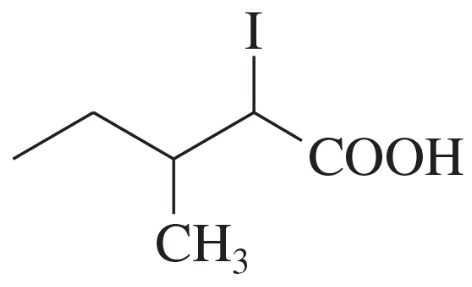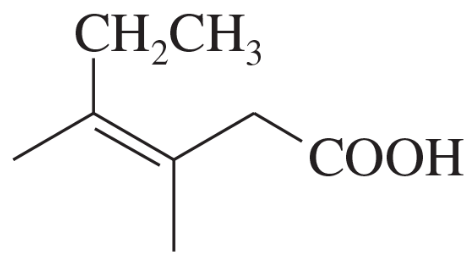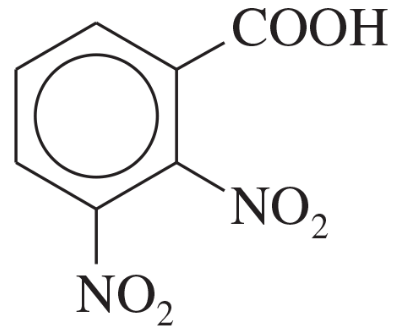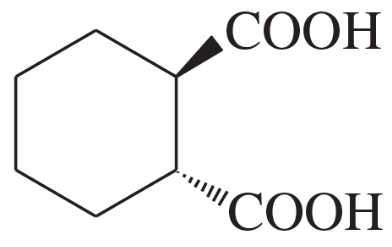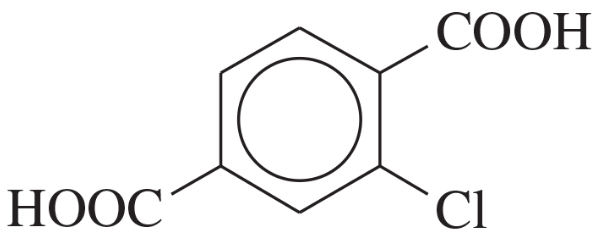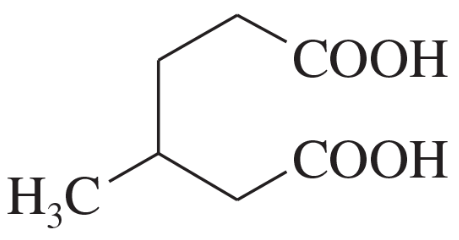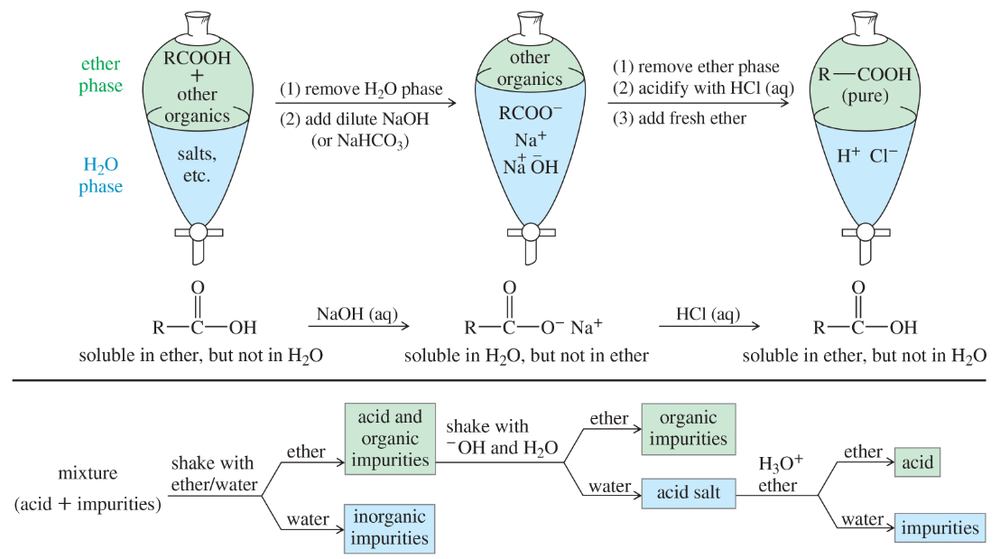 Back
BackProblem 1a-d
Draw the structures of the following carboxylic acids.
(a) α-methylbutyric acid
(b) 2-bromobutanoic acid
(c) 4-aminopentanoic acid
(d) cis-4-phenylbut-2-enoic acid
Problem 1e-h
Draw the structures of the following carboxylic acids.
(e) trans-2-methylcyclohexanecarboxylic acid
(f) 2,3-dimethylfumaric acid
(g) m-chlorobenzoic acid
(h) 3-methylphthalic acid
Problem 2a,b,c
Name the following carboxylic acids (when possible, give both a common name and a systematic name).
(a)
(b)
(c)
Problem 2d,e,f
Name the following carboxylic acids (when possible, give both a common name and a systematic name).
(d)
(e)
(f)
Problem 3a
Rank the compounds in each set in order of increasing acid strength.
(a) CH3CH2COOH, CH3CHBrCOOH, CH3CBr2COOH
Problem 3b
Rank the compounds in each set in order of increasing acid strength.
(b) CH3CH2CH2CHBrCOOH, CH3CH2CHBrCH2COOH, CH3CHBrCH2CH2COOH
Problem 3c
Rank the compounds in each set in order of increasing acid strength.
(c)
Problem 4
Suppose you have just synthesized heptanoic acid from heptan-1-ol. The product is contaminated by sodium dichromate, sulfuric acid, heptan-1-ol, and possibly heptanal. Explain how you would use acid–base extractions to purify the heptanoic acid. Use a chart, like that in Figure 20-3, to show where the impurities are at each stage.
Problem 5
Phenols are less acidic than carboxylic acids, with values of pKa around 10. Phenols are deprotonated by (and therefore soluble in) solutions of sodium hydroxide but not by solutions of sodium bicarbonate. Explain how you would use extractions to isolate the three pure compounds from a mixture of p-cresol (p-methylphenol), cyclohexanone, and benzoic acid.
Problem 6
Oxidation of a primary alcohol to an aldehyde usually gives some over-oxidation to the carboxylic acid. Assume you have used PCC to oxidize pentan-1-ol to pentanal.
(a) Show how you would use acid–base extraction to purify the pentanal.
(b) Which of the expected impurities cannot be removed from pentanal by acid–base extractions? How would you remove this impurity?
Problem 7
The IR spectrum of trans-oct-2-enoic acid is shown. Point out the spectral characteristics that allow you to tell that this is a carboxylic acid, and show which features lead you to conclude that the acid is unsaturated and conjugated.
<IMAGE>
Problem 8c
How many stereoisomers are possible for c. a ketotriose?
Problem 10
Write the mechanism for the base-catalyzed conversion of D-fructose to D-glucose and D-mannose.
Problem 11a,b
Show how you would synthesize the following carboxylic acids, using the indicated starting materials.
(a) oct-4-yne → butanoic acid
(b) trans-cyclodecene → decanedioic acid
Problem 11d
Show how you would synthesize the following carboxylic acids, using the indicated starting materials.
(d) butan-2-ol → 2-methylbutanoic acid
Problem 11e
Show how you would synthesize the following carboxylic acids, using the indicated starting materials.
(e) p-xylene → terephthalic acid
Problem 11f
Show how you would synthesize the following carboxylic acids, using the indicated starting materials.
(f) allyl iodide → but-3-enoic acid

